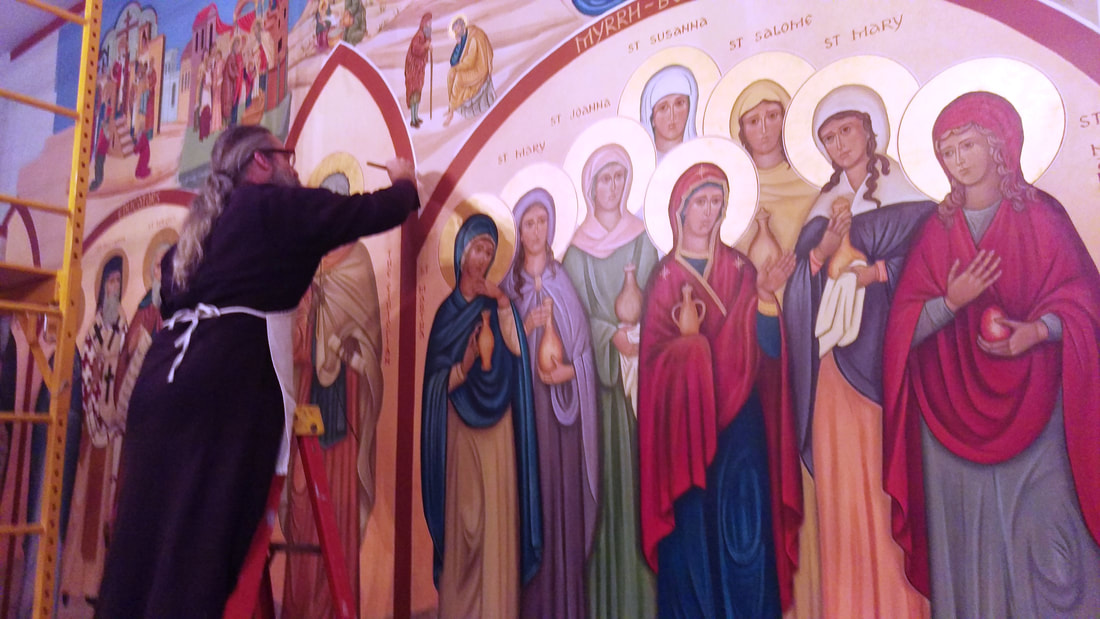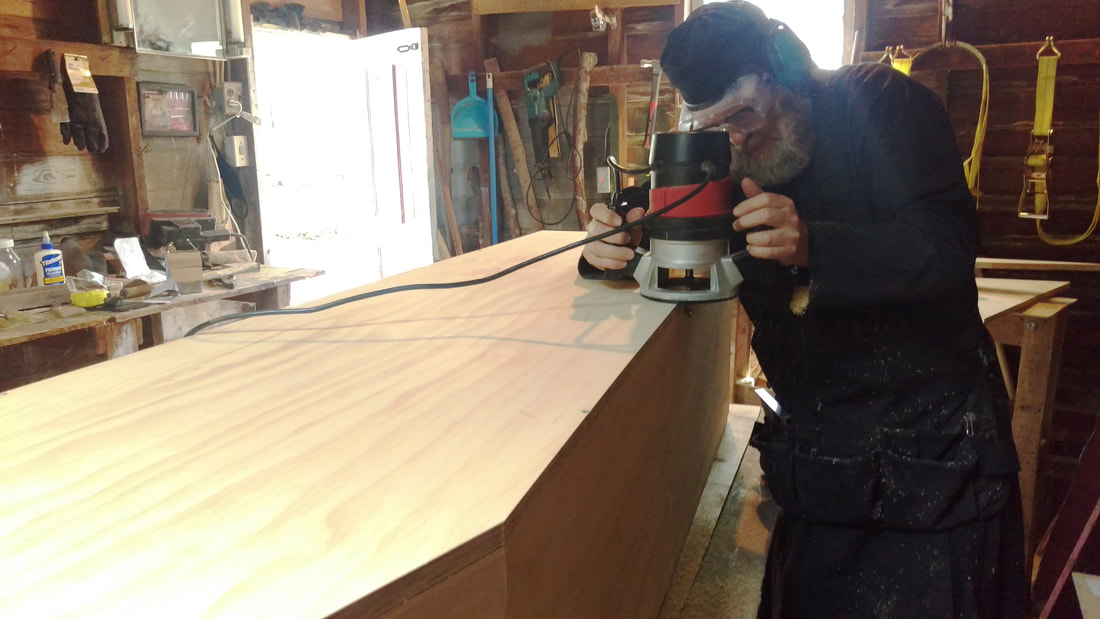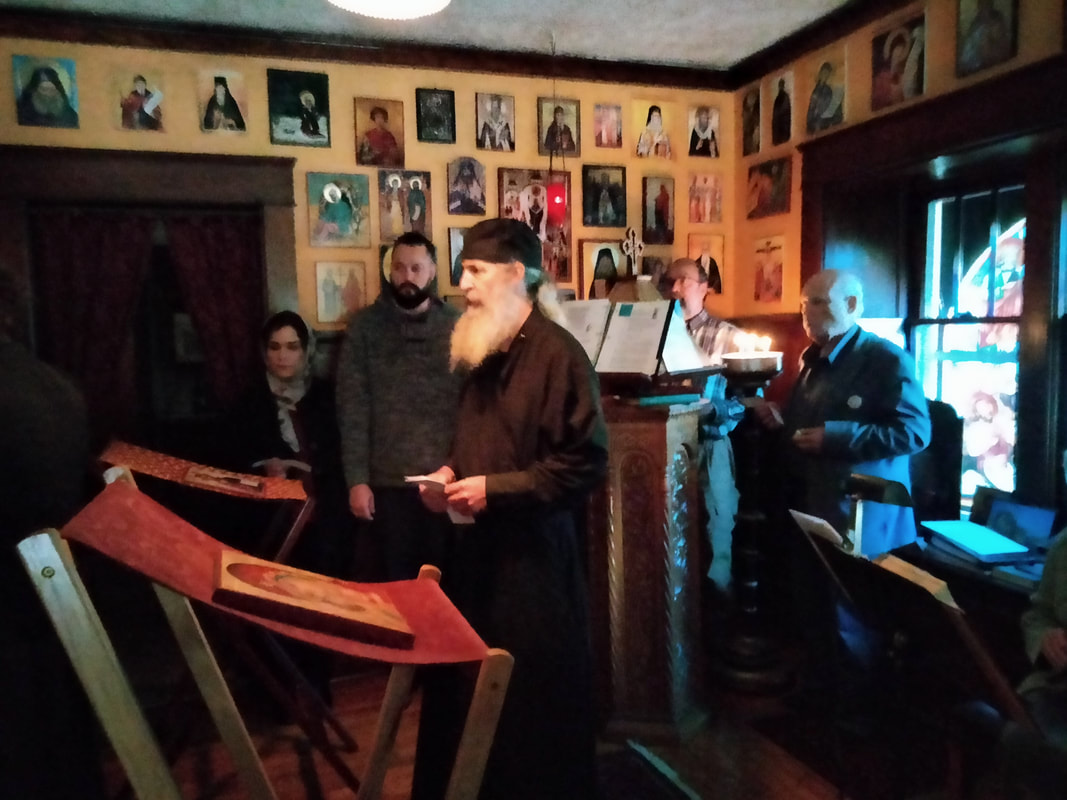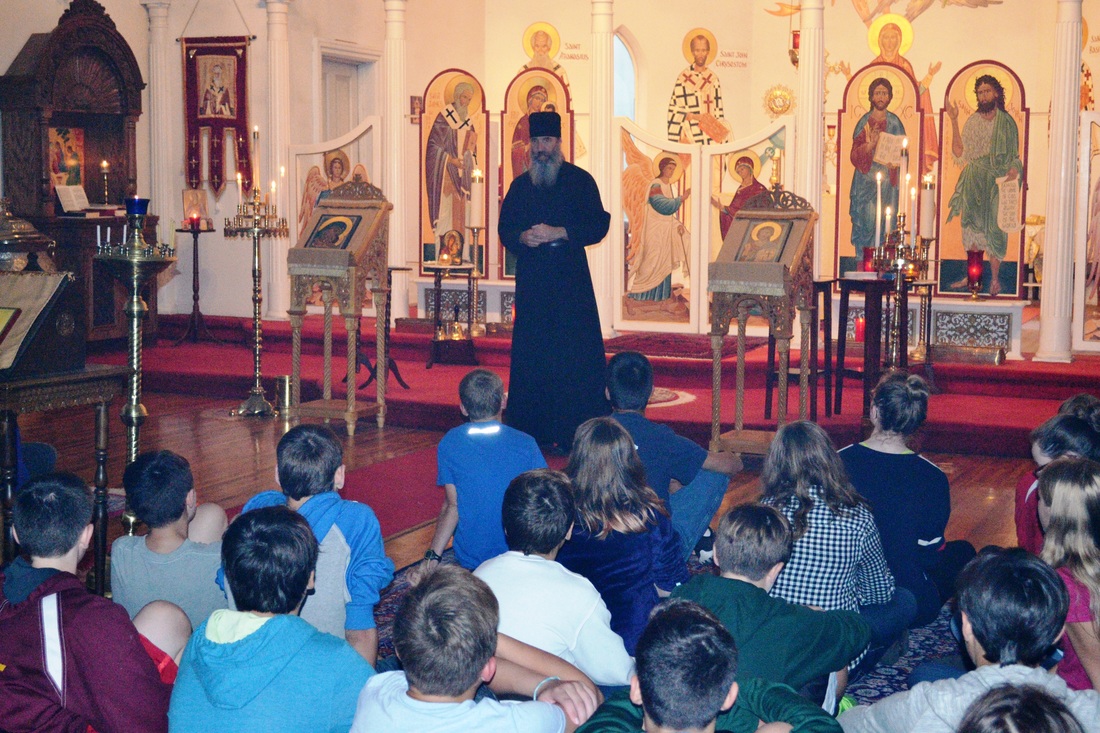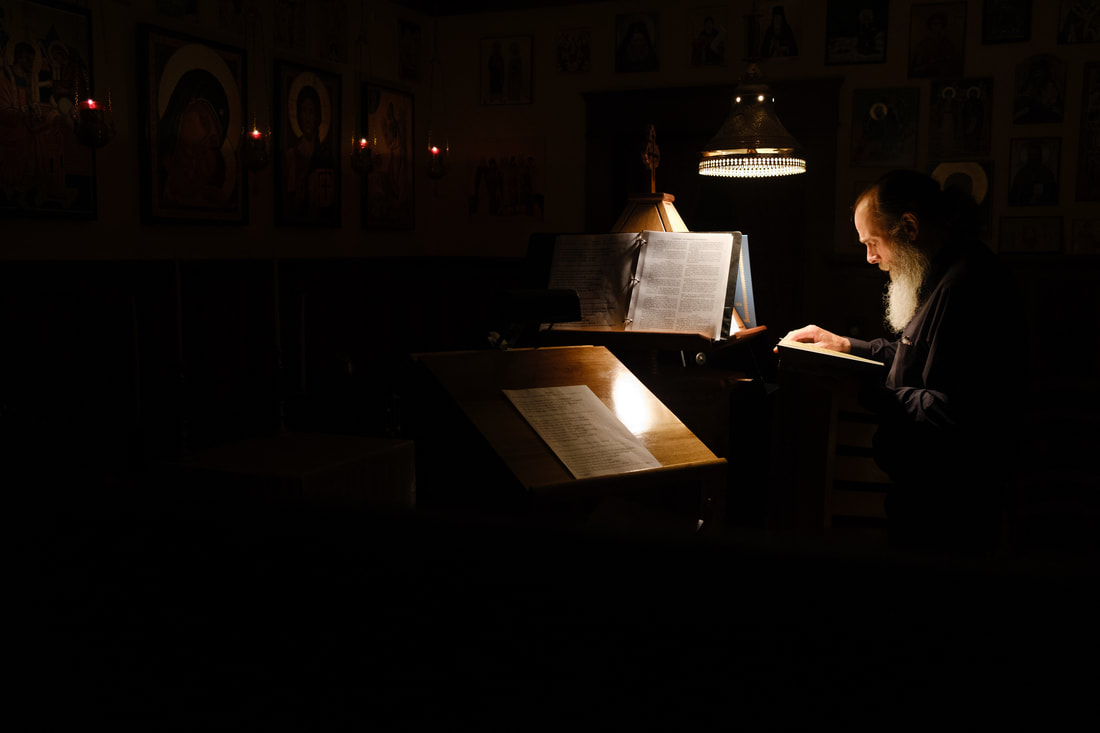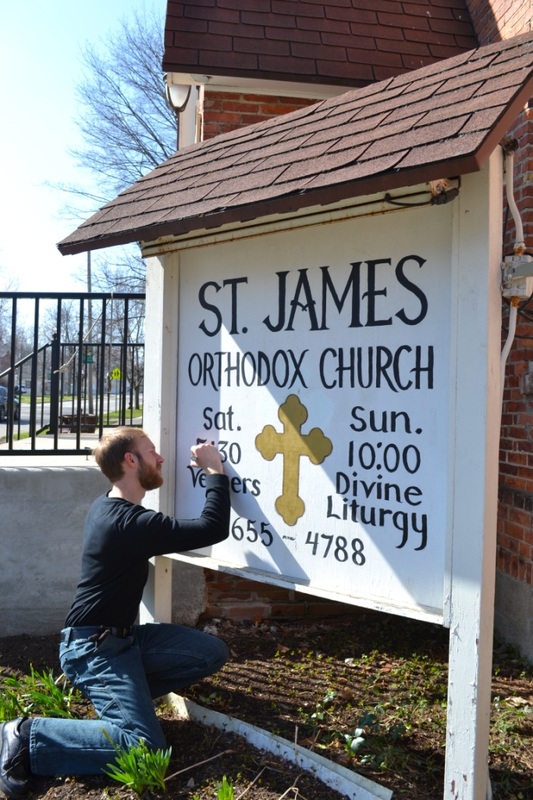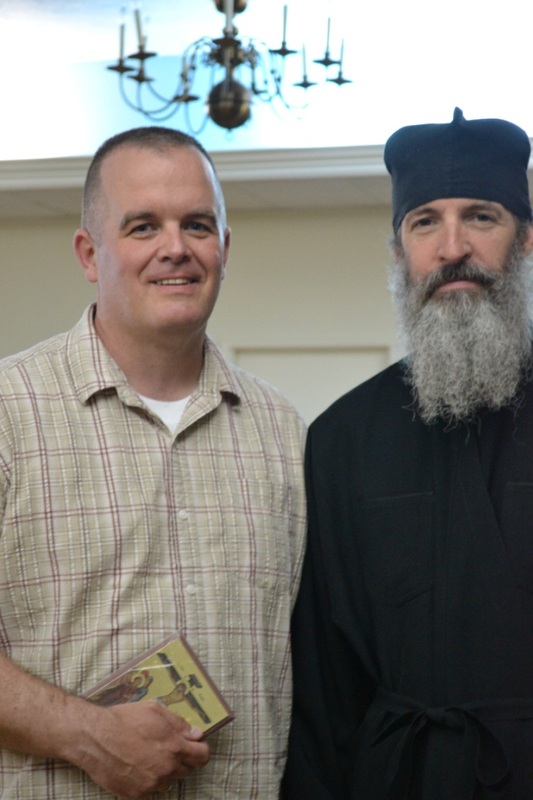"Where words are many the devil is not wanting." Proverbs

THE MONASTIC HOUSE: As has been the case with many monasteries, St Romanos Hermitage began in a single house, a stately one-hundred year old home with woodwork rarely seen in homes today. A second property and house were acquired in 2021 very near the original house. There are four monastic men in the St Romanos Hermitage. The hermitage houses reside in a neighborhood located on the southern edge of the old small town of Williamston (population of 3,800) in Michigan. The hermitage is located in town where monks can provide music instruction to the community and walk where ever they need to go. Monastic services are conducted both at St Romanos Hermitage and St James Church which is a few blocks away, as are the grocery store and hardware store. The monks do their own cooking, cleaning, grocery shopping, and grounds maintenance. There is no television or internet access at St Romanos Hermitage.
|
BARN-TO-CHAPEL CONVERSION: We are in the early stages of converting a 100-year old Carriage House into a monastic chapel. It is 20x30 with a 30-foot ceiling. In 2021 we removed the upper floor and a contractor installed steel posts and I-beams to both reinforce the walls and hold the future 4-peaked roof with a cupola on top. Phase 2 is scheduled for the summer of 2023 to replace the roof and install an 8-foot wide and 16-foot tall gold onion dome. A sketch of the future exterior is below.
|

AMERICAN CULTURE: St Romanos Hermitage opens its arms to all Orthodox cultures and practices. However, St Romanos Hermitage does not confine itself to one ethnic culture or another but rather yearns to meld the best of all cultural ascetic practices into a unique, simple, silent, mystical and reverent American monastic existence, minus the lax casualness sometimes associated with American lifestyles. We strive to further develop an American Orthodox Monastic contemplative musical sound.


ICONOGRAPHY: While at St Romanos Hermitage, monastics and guests can make candles, garden, record music, bake bread for services and also learn to write icons.
HERMITAGE GUESTS: St Romanos Hermitage averages approximately 120 guests each year with visits varying in length from a few hours to several weeks. There are three guestrooms. While visiting St Romanos Hermitage, we request all guests comply with normal monastery visitation etiquette standards in regards to attire, conduct, and quietude. Guests are expected to attend all monastic services.
Procession to bless our new property on our Patronal Feast in 2021.

GROUNDS: The hermitage has enough room for five-to-six monks, has it's own chapel, a three-season reading room, a vegetable garden and two barns behind the hermitage. The larger of the two barns (a carriage house) is being converted to an monastic chapel while the other smaller barn is used for woodworking. St Romanos Hermitage also makes coffins for purchase. They can be in the rectangle shape or the traditional coffin shape.
The monastics grow and eat from their own garden of tomatoes, potatoes, cabbage, lettuce, zucchini, summer squash, peppers and stevia. All the monastics are vegetarians. The small size of the hermitage enables a manageable maintenance workload for the few monks which then doesn't interfere with monastic services or the personal ascetic prayer rule.
"What does a monk do? Nothing. Preserve his soul from destructive thoughts."
-- Elder Barsanuphius of Optina
-- Elder Barsanuphius of Optina

RECORDING STUDIO: As part of the musical focus, St Romanos Hermitage also produces their own recordings on-site in their own recording studio. Recordings of the Orthodox Pre-Communion Prayers, the Psalms, and other various songs can be heard by clicking here. These recordings have been said to have a unique and soothing sound, not quite attributable to any particular culture and yet neither exclusively American sounding, but a mystical merging of several styles. Some music employs traditional Orthodox tunes and Tones, while others are new melodies and harmonies original to St Romanos Hermitage. Listeners agree the music is calming, peaceful, and prayerful; an equivalent not readily found in other religious genres.

THE "ROYAL WAY" MONASTICISM: As described by St Peter of Damascus and St Paisios, St Romanos Hermitage incorporates the "Royal Way" form of monasticism where 2-4 like-minded men live together in community. This concept was also used in establishing St Herman Monastery in Platina, California under Fr Seraphim Rose as he initially preferred it to the coenobitic form of monasticism. Fr Seraphim also incorporated the Optina model for the daily rule for prayer and spiritual readings, as well as the daily cycle of services, as St Romanos Hermitage also practices. The Royal Way is also advocated by St John of the Ladder at the end of Step 1. The Royal Way is similar to the semi-eremitic form of monasticism and is sometimes how monasteries and monks begin, to include St Sergius of Radonezh.

TWO-FOLD FOCUS: St Romanos Hermitage has a twofold focus: 1) to give back freely of the musical talents we have been given, and 2) to provide a place for men to live quiet, prayerful, ascetic lives. Of course, if someone seeking the monastic life is not necessarily musical, this would not prevent them from visiting or joining St Romanos Hermitage. This is simply a focus of this particular hermitage, as each monastery has their own particular emphasis or gifts. Services reflect normal Eastern Orthodox structure. When not in services, silence is always preferred to talking as the Jesus Prayer is prayed continuously. When the monks are not in service, there is always work to be done to both beautify the monastery and to enhance the trades of the monastics.

MUSIC LESSONS: Desiring to be unmercenary musicians, St Romanos Hermitage offers music lessons in chanting, violin, viola and piano at no cost. As God has given us these gifts for free, we give them to others for free. The Hermitage currently has over 15 students with 10 on a waiting list. St Romanos Hermitage also assists St James Orthodox Church by contributing to the daily upkeep and maintenance and conducting the music for their services. This includes summer and winter maintenance of the hermitage and church grounds, help with church and hermitage work-days, and baking bread for various church services and events.
"With whatever feelings a man instills within himself during his life,
he departs into eternal life." -- Elder Barsanuphius of Optina
he departs into eternal life." -- Elder Barsanuphius of Optina



